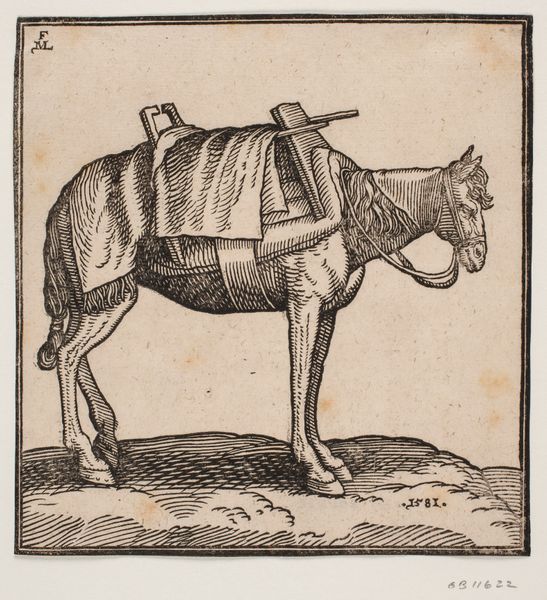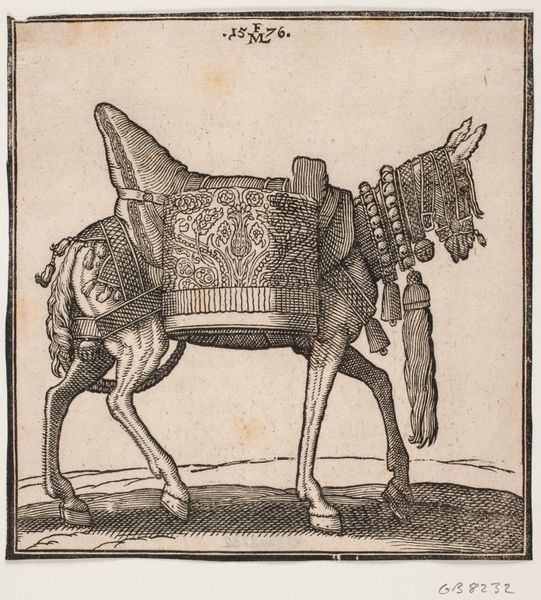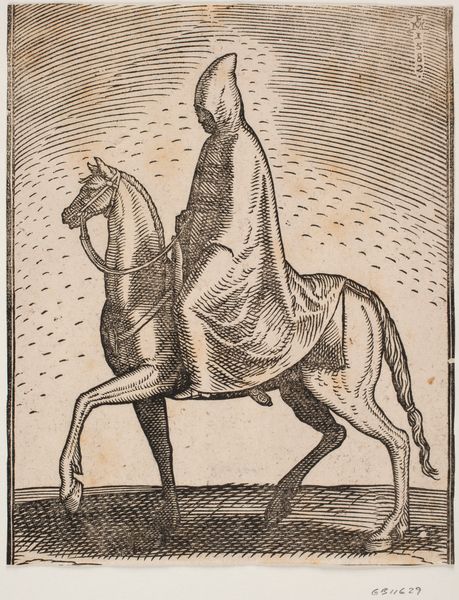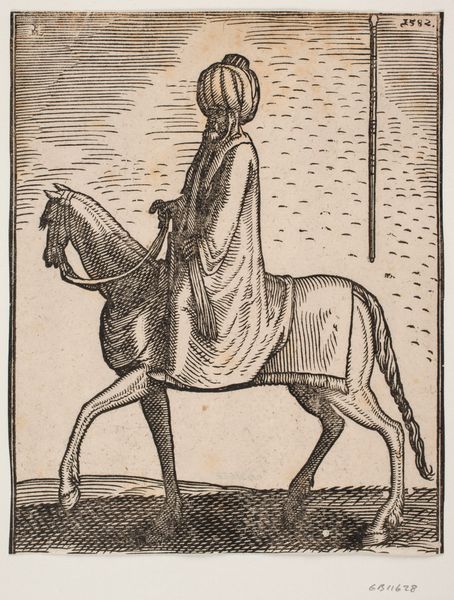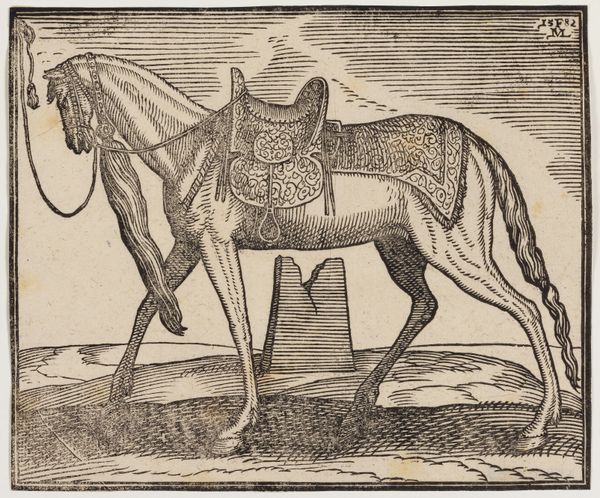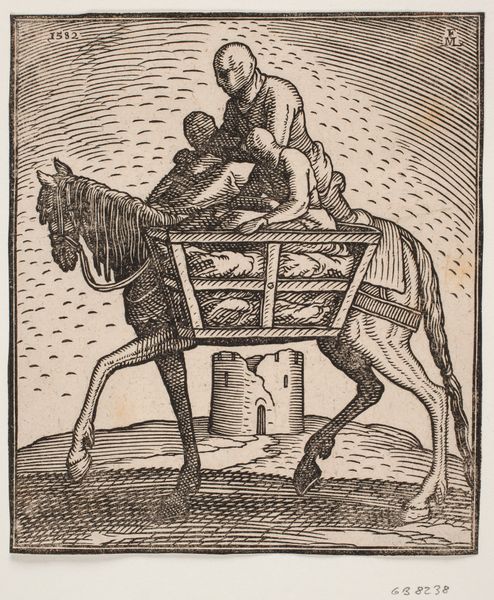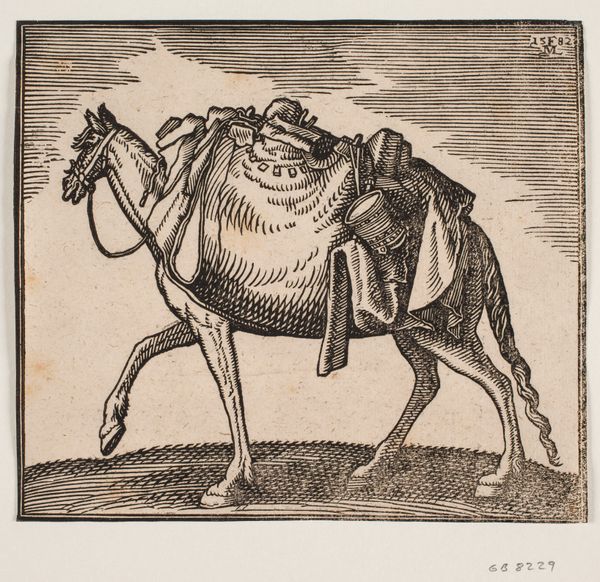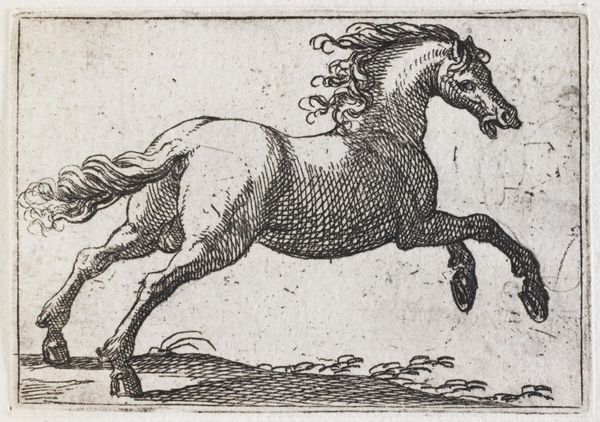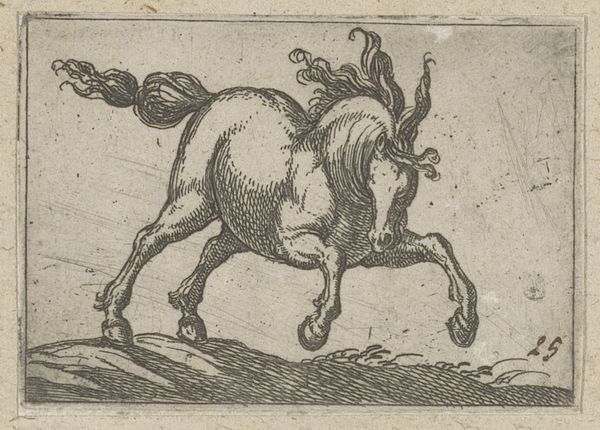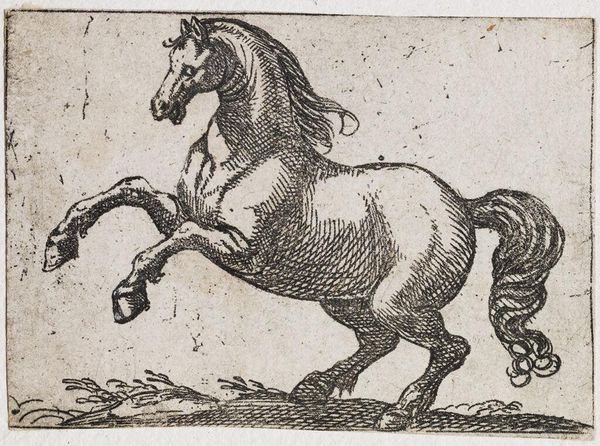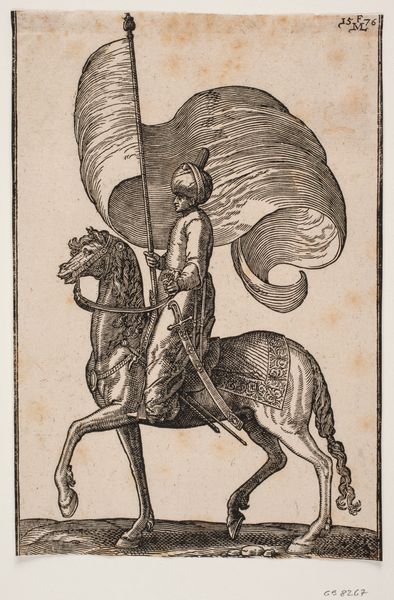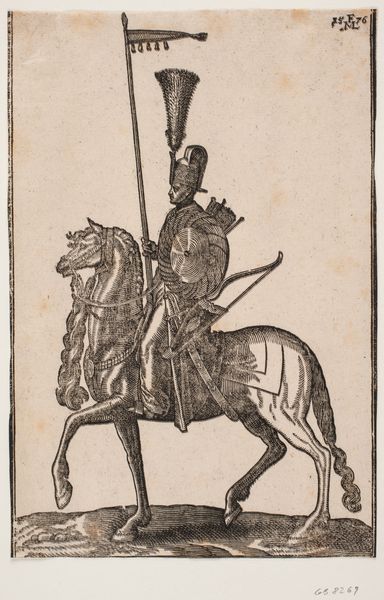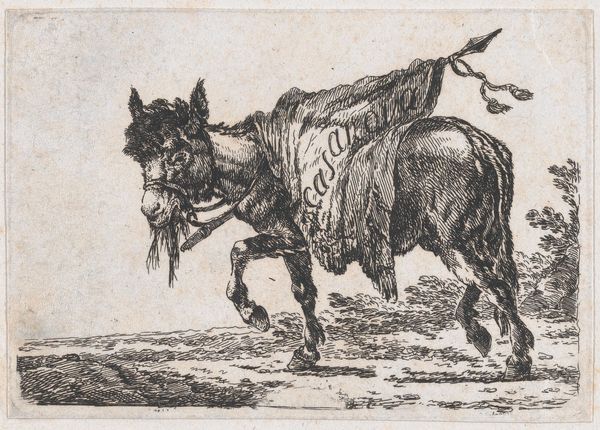
En endnu ubelæsset pakhest med bærestativ på ryggen, set skråt bagfra mod h. 1582
0:00
0:00
print, woodcut
# print
#
landscape
#
woodcut
#
northern-renaissance
Dimensions: 143 mm (height) x 140 mm (width) (bladmaal)
Melchior Lorck created this print of a packhorse in the 16th century using woodcut, a relief printing technique. The image is made by carving away the negative space around the lines, and then inking and pressing the block onto paper. Notice how the parallel lines create a sense of volume and texture, especially in the horse's coat and the draped cloth. Woodcut, being a relatively accessible medium, allowed for the wider dissemination of images in early modern Europe. Lorck likely used specialized carving tools to achieve the precision seen here, which speaks to a skilled tradition of printmaking. Consider the social context: packhorses were essential for trade and transportation. Lorck's choice of subject matter reflects the economic realities of his time. The work involved in creating the woodcut, and the work of the horse itself, both speak to labor and the material conditions of life. By attending to these factors, we appreciate that the image is a crafted object and a document of its time.
Comments
No comments
Be the first to comment and join the conversation on the ultimate creative platform.
